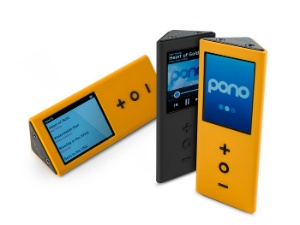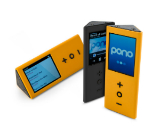
He said the improvements in sound quality that Pono delivered were impressive on both expensive headphones and cheap earbuds. Since that was the top promise made by Neil Young and his colleagues, that’s a relief to hear. The final version of the player might have more finessed capability for searching, but Forde found the current prototype had an unwieldy interface. The small screen, which he likened to the old iPod Photo, was also not ideal for swiping through a hundred-song list.
Another unusual point to his review was the role of the Pono music store. Part of the project’s appeal was being able to purchase top-quality recordings. Forde said that for now, there won’t be store access embedded in the player. Owners will need to get their tunes on a separate computer and then hook up the Pono device to access files. He also noted that Pono does not have WiFi, meaning no wireless connections to home speaker systems and no wireless music purchases. These omissions fall short of Pono’s stated mission to provide a self-contained ecosystem for enjoying high-resolution music. Once the final product makes its way into listeners’ hands, we’ll find out whether or not these are temporary gaps in access.
The projected price for the players once they hit the general U.S. market is $400, although Forde did not have confirmation for a UK price or release date.

